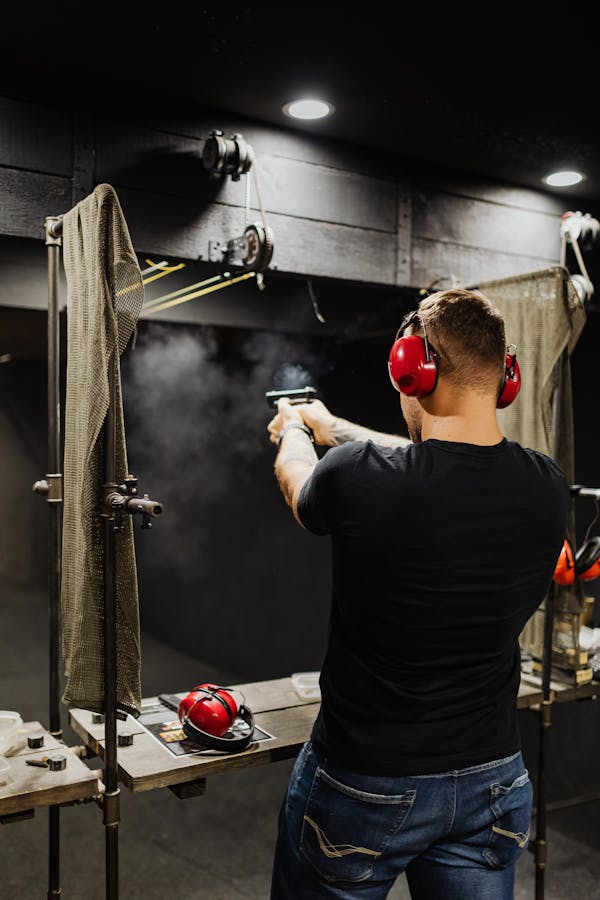Mastering Pistol Handling: A Comprehensive Guide on How to Hold a Pistol
Holding a pistol correctly is a fundamental aspect of safe and accurate shooting. Whether you’re a seasoned shooter or a beginner, mastering the proper techniques for holding a pistol is essential for maximizing your shooting proficiency. In this blog post, we’ll explore step-by-step instructions on how to hold a pistol correctly and safely.

Understanding Pistol Grip
The grip is the foundation of pistol handling and greatly influences your shooting accuracy and control. Follow these steps to achieve a proper pistol grip:
- Dominant Hand Placement: Place your dominant hand high on the grip, ensuring that the web of your hand is as high as possible on the backstrap of the pistol.
- Firm Grip: Wrap your fingers around the grip firmly, applying pressure evenly with all fingers. Avoid gripping too tightly, as this may cause fatigue and affect your shooting accuracy.
- Thumb Placement: Position your shooting hand’s thumb forward, resting comfortably against the frame of the pistol. Avoid placing your thumb behind the slide, as this may interfere with the pistol’s operation.
- Support Hand Placement: With your support hand, grasp the pistol from below, ensuring that your fingers do not obstruct the slide or ejection port. Your support hand should provide additional support and stability to the pistol.
Finger Placement
Proper finger placement on the pistol is essential for safety and control. Follow these guidelines:
- Trigger Finger: Keep your trigger finger indexed along the frame of the pistol, resting outside the trigger guard. Only place your finger on the trigger when you are ready to shoot.
- Non-Dominant Hand: Ensure that your non-dominant hand’s fingers are clear of the trigger guard and slide. Your non-dominant thumb should point forward alongside the frame of the pistol for added stability.
Stance and Body Position
In addition to proper grip and finger placement, your stance and body position play a crucial role in pistol handling:
- Stance: Adopt a stable shooting stance, with your feet shoulder-width apart and your body weight evenly distributed. Your body should be relaxed yet alert, with a slight forward lean toward the target.
- Body Position: Position your body squarely toward the target, with your arms extended fully but comfortably. Maintain a slight bend in your elbows to absorb recoil and minimize muzzle rise.
Practice and Training
Mastering the art of holding a pistol takes practice and training. Take advantage of shooting classes and training sessions offered by reputable firearms instructors to refine your technique and improve your shooting proficiency. Additionally, regular practice at the range will help you build muscle memory and confidence in your ability to hold a pistol safely and effectively.
Visit the Texas Gun Store for Quality Firearms and Accessories
Ready to put your newfound knowledge to the test? Visit the Texas Gun Store to explore our extensive selection of firearms and accessories. Whether you’re in the market for pistols, rifles, or ammunition, we have everything you need to enhance your shooting experience. Explore our inventory here and start honing your pistol handling skills today.
In conclusion, mastering the art of holding a pistol is essential for safe and accurate shooting. By understanding proper grip, finger placement, stance, and body position, as well as seeking training and practice opportunities, you can become a more confident and responsible pistol handler. Visit the Texas Gun Store to discover quality firearms and accessories and take your shooting skills to the next level.
